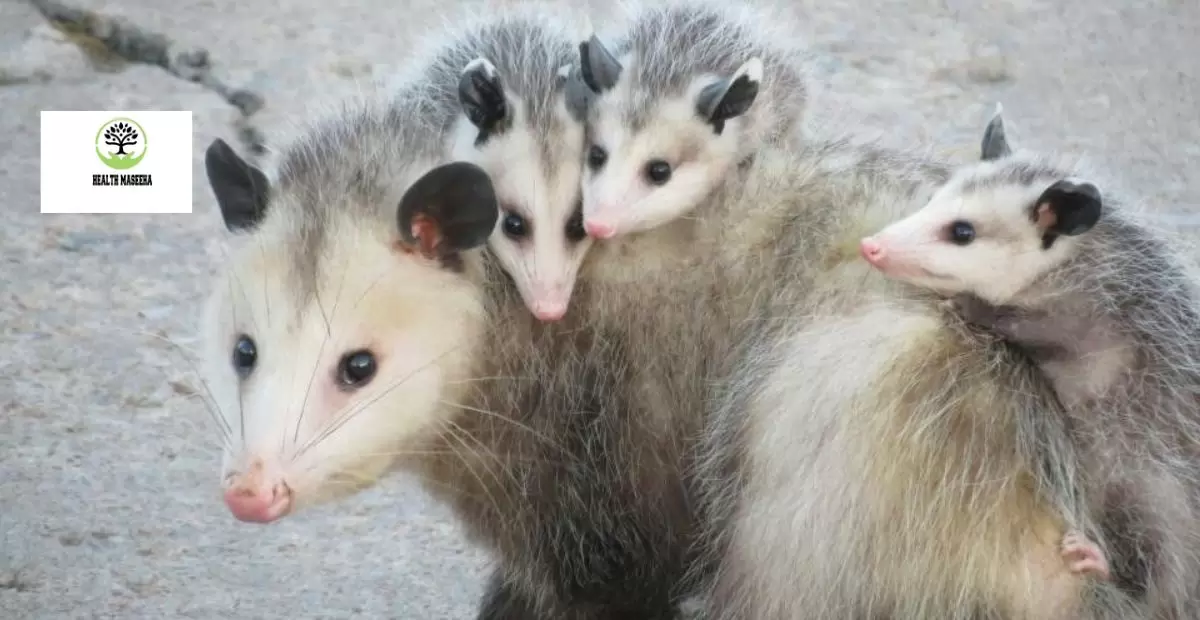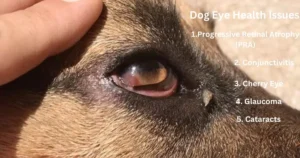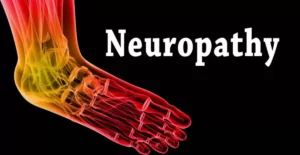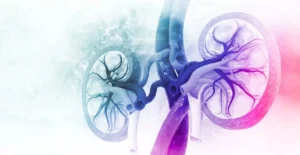Opossums transmit Leptospirosis, tuberculosis, and toxoplasmosis. These diseases can cause folks to be spread out on the casual that they come into contact with opossum waste or liquids. To avoid shrinking these diseases, it is vital to have pets away from wild opossums and not feed or trace them.
The dense Appalachian forests’ underbrush, where shadows dance with the whispers of the wind, conceals a sinister threat. As dusk falls and the world becomes still, one question reverberates in the minds of those who live in these woods. What diseases do opossums carry?
It is famous that opossums carry a numeral of diseases that can harm humans and other animals. Leptospirosis is one of these conditions, and it can cause flu-like indications and even kidney failure. Salmonellosis, and contagious infection that causes diarrhea, fever, and restricting in the abdomen, is another cause for concern.
Hidden Health Hazards
Numerous unnoticed, hidden health risks exist in today’s modern world. From the air we inhale to the items we utilize every day, risks can be unobtrusive yet critical. Indoor air defilement, for instance, as often as possible escapes everyone’s notice; notwithstanding, it can provoke respiratory issues and other ailments long term.
Along these lines, family cleaners and individual consideration items might contain destructive fixings that can hurt our well-being without our insight. Indeed, even harmless things like plastic food holders can present dangers because of possible substance draining. We can more readily safeguard our well-being and prosperity.
A Veterinary Perspective
According to a veterinary point of view, understanding opossums is pivotal for their consideration and prosperity. Veterinarians should give particular consideration to these marsupials as a result of their unmistakable physiological and social qualities. Both in the wild and imprisonment, these entrancing creatures flourish.
Through deterrent medication, injury treatment, and recovery endeavors, veterinarians assume a vital part in opossum government assistance. Veterinarians can educate pet owners, wildlife rehabilitators, and conservationists about opossum biology and behavior, fostering a greater community appreciation for these frequently domesticated animals.
Opossums and Human Health
Opossums play an amazing role in human health by serving to control the spread of disease. These nocturnal beings are nature’s sterility workers, eating pests like ticks, which can carry harmful pathogens such as Lyme disease, and humans encountering disease-carrying insects in their setting.
In addition, opossums are particularly vulnerable to rabies and several other infectious diseases due to their distinctive aggressive nature. Their contention with such sicknesses makes them far-fetched transporters, the gamble of programs for people. Opossums pay to a superior organization and convolutedly support human well-being.
Where Do These Marsupials Live?
The diverse group of mammals known as marsupials is primarily found in Australia. In any case, a few animal types likewise live in Papua New Guinea and portions of Indonesia, which are close by. Kangaroos, koalas, and wombats are among the most notable marsupials tracked down in Australia.
Types of Marsupials
There are more than 330 types of marsupials, grouped into a few families, each with special qualities and transformations. The Macropodia family, which includes kangaroos, wallabies, and wallaroos, is one of the most well-known families.
Koalas: Are arboreal marsupials native to Australia, where they live in forests and eucalyptus woodlands? These solitary creatures contribute by far most of their energy in eucalyptus trees, benefitting from their leaves. The engineered substances present in eucalyptus leaves are for the most part destructive to various animals.
Opossums: The only species of opossum that is native to North America is the Virginia opossum. They are very adaptable animals that can live in prairies, woodlands, and, surprisingly, cities. Opossums are put on the map by the prehensile tails they use to adjust themselves and grab things.
Kangaroos: These are notable marsupials essentially tracked down in Australia. They are well-suited for grasslands, woodlands, and scrublands, among other habitats. They can hop at high speeds and efficiently cover long distances thanks to their powerful hind legs.
The Ecological Role of Opossums

Opossums shoulder an urgent part in care with animal regularity as nature’s cleaning side. Like pests, pests, and ticks, this makes it less necessary to use damaging pesticides. Their different eating performances and reaching leanings brand them central supporters of keeping a solid climate.
Likewise, opossums help as a game for many killers, counting owls, tricks, and coyotes, remaining a needed link in the food web. Thus, the company of opossums not only benefits networks by honestly completing their searching and bug-eating habits but also indirectly by assisting the unlikely array of classes that rely on them for food.
Opossum Diet and Feeding Habits
Opossums are omnivores, meaning they eat both plant and animal matter. Their diet mainly consists of insects, fruits, berries, nuts, small animals, birds, eggs, and flesh. Opossums are known to search for food, often searching complete trash cans and peat piles in search of meals.
Types of Opossum Diets
1. Generalist Diet: Opossums exhibit a generalist serving strategy, with a wide range of food items created on hand. This spiral in the diet supports their increase in diverse homes, ranging from forests and heaths to city areas.
2. Scavenger Diet: Opossums are notable scroungers, benefiting from flesh and disposing of food items. They assume an essential role in this way, forestalling the spread of illnesses and keeping up with biological equilibrium. Their strong sense of smell and opossums are frequently observed scavenging on roadkill and other animal carcasses.
3. Insectivorous Diet: As well as consuming organic products, vegetables, and little warm-blooded animals, are likewise bug eaters. Opossums are useful partners in efforts to control pests because they hunt insects like grasshoppers, beetles, and cockroaches thanks to their keen sense of smell and sharp teeth.
Impact of Opossums on Public Health
Natural pest controllers and opossums play a surprisingly positive role in public health. Insects, ticks, and rodents, which carry diseases that are harmful to humans, make up their primary diet. Opossums reduce the risk of vector-borne diseases like Rocky Mountain Spotted Fever and Lyme disease by preying on these pests.
Can now and again convey infections themselves, like leptospirosis and tuberculosis. Opossums, particularly those that appear to be ill or injured,. Generally, when overseen mindfully, opossums contribute decidedly to general well-being by controlling bugs that present critical dangers to human prosperity.
Common Diseases Found in Opossums
Sarcoptic mange, which is brought on by mites and causes hair loss and itchiness, is a disease that affects many opossums. Moreover, opossums can contract leptospirosis, bacterial contamination spread through pee, bringing about fever and kidney harm.
One more predominant disease in opossums is coccidiosis, brought about by a parasite in the digestive organs, prompting looseness of the bowels and parchedness. Opossums can be kept clean and their health can be monitored to help stop the spread of these diseases.
Preventive Measures and Control Strategies
Preventive measures and control techniques mean dealing with the number of inhabitants in opossums, which can decrease opossum admittance to food and asylum. The significance of not taking care of wild opossums can deter them from regularly visiting human-possessed regions, limiting likely struggles.
Control strategies also involve humane methods, like using live traps to relocate opossums away from residential areas. Experts to implement population management programs posed by opossums. Overall, a combination of preventive measures and strategic control strategies for humans and opossums in shared environments.
Research Advances in Opossum Disease Ecology

Late exploration of the opossum infection environment has revealed intriguing experiences with the well-being elements of these versatile animals. Understanding opossums’ role in disease transmission and interaction with their environment has advanced significantly thanks to researchers.
| Research Focus | Findings |
| Disease Transmission | Leptospira and Toxoplasma gondii are among the pathogens that opossums store in their intestines as reservoirs. |
| Population Dynamics | Urbanization correlates with increased opossum populations, influencing disease spread. |
| Parasite Interactions | Opossums harbor a diverse range of parasites, influencing ecosystem dynamics. |
| Immune Response | Opossums exhibit unique immune responses to certain pathogens, shedding light on host-pathogen coevolution. |
| Environmental Factors | Climate change impacts opossum habitat and disease prevalence. |
| Zoonotic Risks | Knowledge of opossum-borne diseases is essential for managing zoonotic risks to humans and wildlife. |
Through inventive strategies like hereditary investigation and natural demonstrating. The instruments behind illness spread among opossums and other untamed life species. Strategies for disease control and conservation that are beneficial to opossums and the environment as a whole
Transmission Routes of Opossum-Borne Illnesses
Opossums, similarly to other wild animals, can convey various diseases that affect human prosperity. For the executive’s strategies and countermeasures, it is essential to comprehend the routes by which these diseases spread.
1. Direct Contact
Infections can spread quickly through direct contact with tainted opossums or their liquids, such as spit, urine, or excrement. Taking care of opossums, getting chawed on or scratched by them, or coming into contact with sullied surfaces are possible reasons for this.
2. Indirect Contact
Indirect contact involves exposure to infectious agents carried by opossums through contaminated environments. This can occur when individuals encounter areas where opossums frequent, such as yards, gardens, or garbage bins, where they may leave behind infectious materials.
3. Vector-Borne Transmission:
A few infections conveyed by opossums can be communicated to people through vectors like insects, ticks, or mosquitoes. Opossums might act as repositories for these vectors, permitting them to get and send microbes to people during blood-taking care.
4. Inhalation of Airborne Particles:
In certain circumstances, airborne particles containing infectious agents shed by opossums can be inhaled by humans, leading to the transmission of respiratory diseases. This route of transmission may occur in settings that inhabit enclosed spaces or where their droppings become airborne.
5. Ingestion of Contaminated Food or Water
CES with their feces or urine, allowing pathogens to be passed on to humans who consume contaminated water or food. This course of transmission is especially unsettling in regions where opossums approach putting away food or water supplies.
Understanding these transmission routes is essential for implementing effective preventive measures, such as proper sanitation practices, pest control efforts, and avoidance of direct contact with wild opossums and their habitats.
Emerging Infectious Diseases Linked to Opossums
Arising irresistible illnesses connected to opossums is a developing worry for general wellbeing. These marsupials can convey microbes, for example, leptospirosis and toxoplasmosis, through their dung or pee. These illnesses feature the requirement for proactive measures to relieve gambles.
Preventive systems incorporate appropriate waste administration to limit opossum cooperation with human conditions and state-funded training about the potential well-being perils related to these creatures. Can defend against rising irresistible dangers and advance the prosperity of the two people and opossums.
Health Concerns Associated with Urban Opossum Populations

Township opossum populations raise health concerns due to their potential role as transporters of diseases such as leptospirosis and salmonellosis. These nocturnal creatures often plunge through trash, increasing the risk of dispersal pathogens to humans and pets. Like fleas and ticks, exasperating health risks in urban environments.
To mitigate health concerns associated with urban opossum populations, proper waste management and securing outdoor garbage bins are essential. Furthermore, maintaining a clean environment and avoiding direct contact with opossums can reduce the likelihood of disease transmission.
FAQs
What diseases can opossums carry?
Leptospirosis, tuberculosis, and spotted fever are all transmitted by opossums.
Can opossums transmit diseases to humans?
Indeed, opossums can communicate illnesses to people through nibbles, scratches, or contact with their dung.
How can I prevent getting sick from opossums?
Avoid direct contact with opossums and their droppings, and ensure your pets are vaccinated against diseases they may carry.
Conclusion
Whereas opossum’s container transmits definite diseases, the risk to humans is usually low. One common mistake is that opossums feast on rabies, but in reality, the disease is rarely transmitted. Like fleas and ticks, proper defenses such as shunning direct contact and continuing good disinfection can importantly lessen any potential health risks.
Overall, it’s important to method dealings with opossums with a level of care but not excessive fear. By considering their imperfect role in disease broadcast and taking simple preventive measures, we can exist with these fascinating creatures by reducing any potential health concerns.












